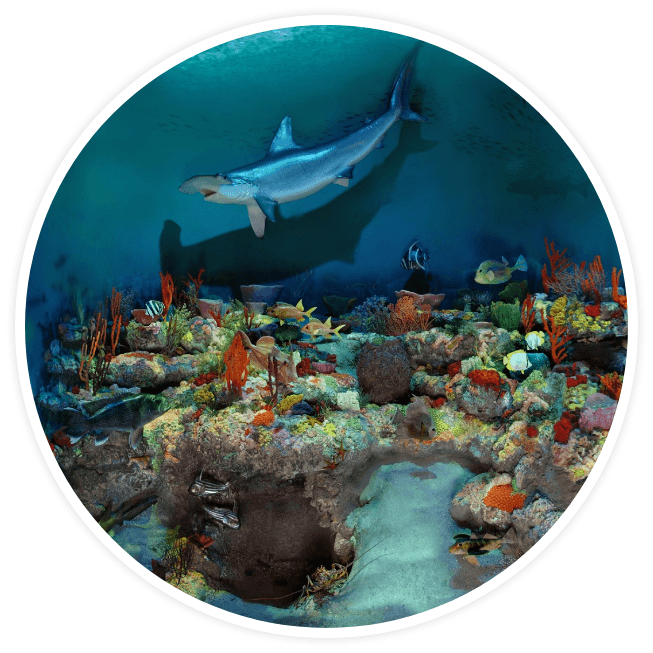
A Walk Through Time in Georgia
Experience the story of Georgia's natural history and the development of our planet as you explore the sights and sounds of the state's main geographic regions. Your journey begins in the Piedmont, the region in Georgia with the oldest rocks, and ends at the Coast and Barrier Islands, Georgia's youngest region. Along the way, you will encounter an amazing array of animals and plants and learn more about the geographical regions these creatures call home.
Accompanying the modern dioramas are galleries and theaters that reveal the chronological development of the Earth. Georgia's geological and fossil records are used to explain how we know what Georgia looked like in the past.
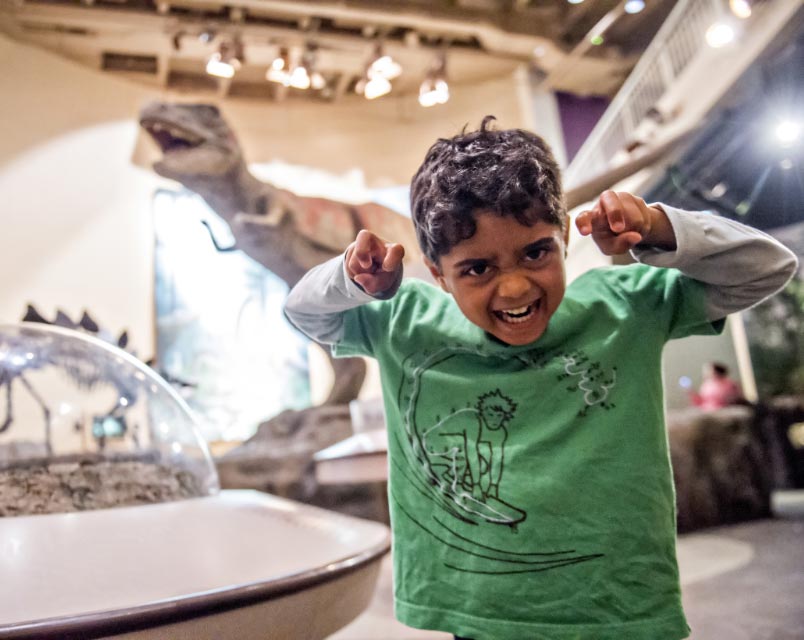
Exhibit Highlights
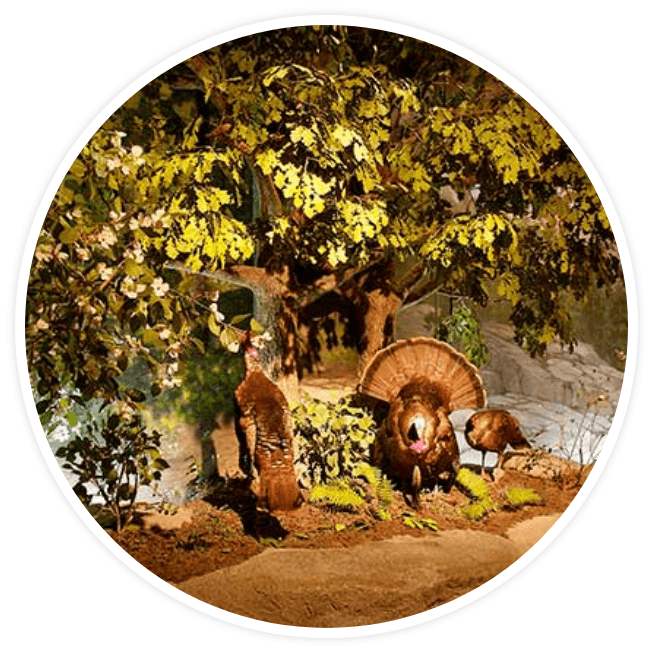
Piedmont
Piedmont means "foot of the mountains" and describes this large region that encompasses the rolling foothills of the Appalachian Mountains.
Appalachian Mountains
The Appalachian Mountains are home to Tallulah Gorge, the headwaters of the Chattahoochee River and Georgia’s highest peak at Brasstown Bald.
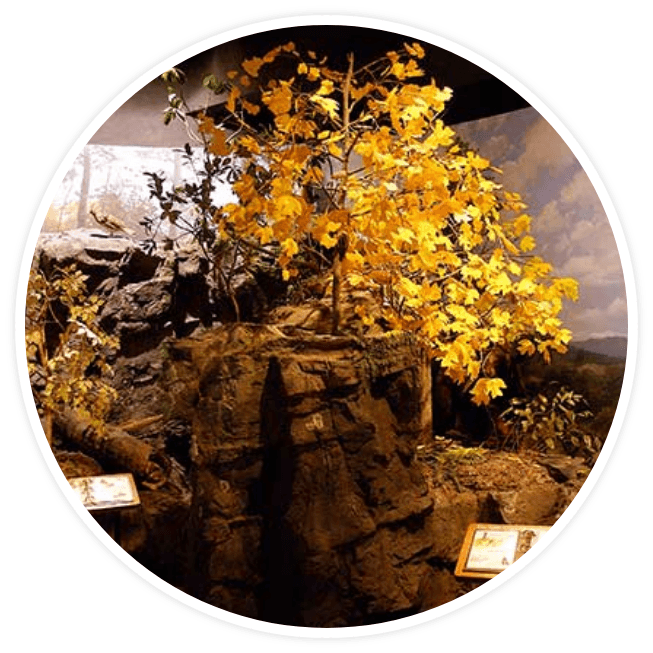
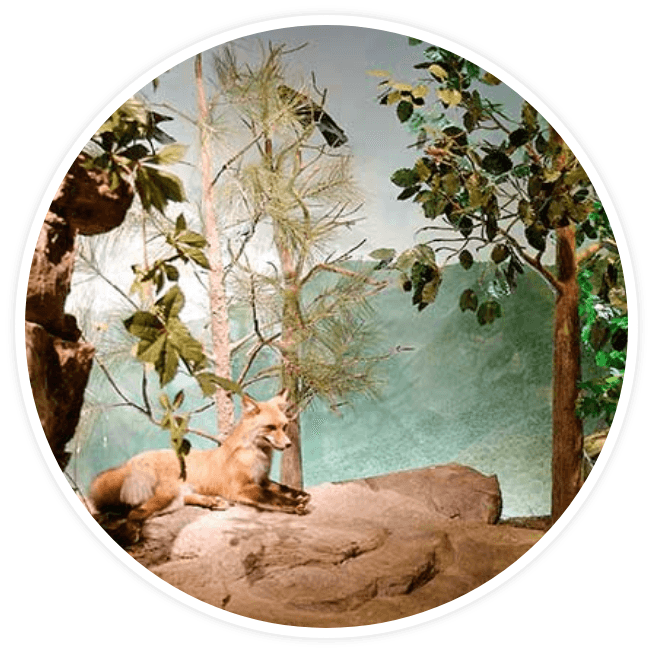
Ridge and Valley
Fossils are common in the rock formations in the Ridge and Valley region because a shallow sea once covered this region.
Dinosaur Gallery
Dinosaurs once lived in some areas of Georgia. The Dinosaur Gallery contains murals, life-sized models, articulated dinosaur skeletons and other displays depicting the Mesozoic Era.
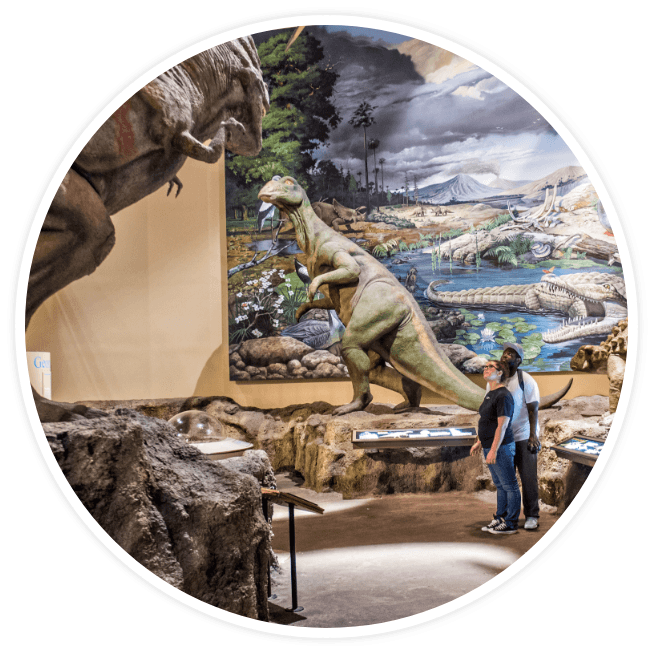
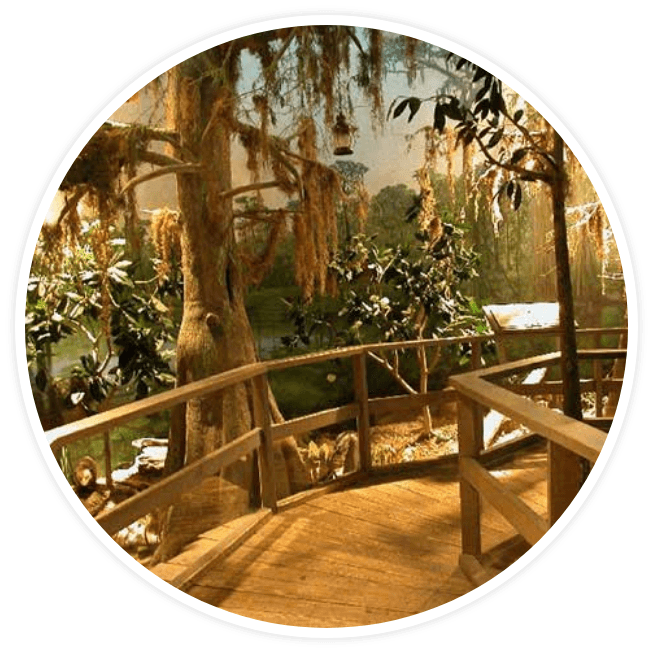
Okefenokee Swamp
The Okefenokee Swamp formed 25,000 years ago and is now home to alligators, snapping turtles, water moccasins, blue herons, owls, raccoons, otters and more.
Coast and Barrier Islands
Georgia's youngest region is along the coast and barrier islands, an area that is constantly changing where the rivers meet the sea.
